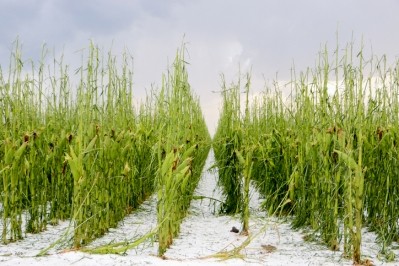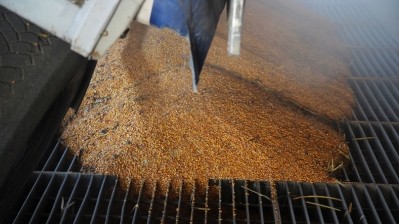Where’s WASDE? US shutdown delays US, global feed crop production data

The US Department of Agriculture (USDA) had scheduled a release of the January World Agriculture Supply and Demand Estimates (WASDE) report along with a release of data regarding total feed crop production in the 2018 harvest and planting of the upcoming winter wheat crop.
However, it announced last week that the reports would not be published.
The other documents initially set to be released included the crop production-annual, the grain stocks and the winter wheat and canola seedings reports, said the USDA. However, none of those reports were released as planned on Friday [January 11].
“This is about as uncertain as it gets,” said Todd Hubbs, clinical assistant professor of agricultural commodity markets with the University of Illinois.
The data in those reports was important for feed crop producers, as they give an estimate of final production numbers for corn and soybeans grown in 2018 and the amount of feed used, he said. Yield estimates for some feed crops started to drop at the end of last year, and final production amounts would have been in the missing reports.
“It’s tough today – if you’re thinking about planting spring wheat, it would be nice to know what the winter acres are," he added.
Although some feed crop producers will have a set planting plan, others will still be in the process of determining what they will plant especially in flexible acres, Hubbs said.
“We don’t have the numbers to update for January, everyone is trying to feel it out right now,” he said regarding the number of acres planted in winter wheat and canola.
Decisions of what to plant in the spring for some acres are likely to be made, “once those numbers come in, and we have some idea of where the trade deal is going.”
“Hopefully the shutdown gets resolved and we can get some clarity sooner than later,” he added.
Feed crop production forecasts
In place of the USDA report, the tech and data company Indigo Ag released its own forecast of end of the year production for US corn and soybeans along with estimates for crop production in Brazil and Argentina.
The Massachusetts-based company uses satellite imaging and a machine learning platform to generate changes to soybean and corn yields along with production forecasts for North and South America, it said.
“The executive department is responsible for publishing the monthly World Agriculture Supply and Demand Estimates (WASDE) report, a comprehensive forecast of crop and livestock supply and demand,” the company said. “Insights from this report are fundamental to informing the global agricultural market, which guides growers’ decision-making. In the absence of this information, Indigo is sharing agricultural market data for the Americas gathered by its GeoInnovation unit.”
In the US, the final yields for both corn and soybeans were lowered from the USDA’s previous estimates of 178.9 bushels per acre for corn and 52.1 bushels an acre for soybeans, the company said.
“Late-season flooding led to harvest issues negatively impacting an otherwise robust crop.”
Looking at anticipated production in Brazil, the company forecasts that soybean production is down by 6.3% and that corn production is reduced by 5.1% from previous USDA estimates. The decline was attributed to ongoing dry conditions in some parts of the country.
“In some states, soybeans were planted soon after their permitted planting dates and the dry weather disrupted the plants during the crucial pod-filling phase,” the company reported. “Indigo’s Crop Health Index for soybeans in Brazil was higher than normal in November and early December, but it is now below ten-year norms for this stage in the season.”
However, in Argentina there has not been much change from earlier production expectations for soybeans, Indigo said. Corn production amounts have increased by about 1.1% or 0.5m metric tons.
On Friday, January 4, the USDA announced that several data reports generated by the National Agricultural Statistic Service (NASS) and the Office of the Chief Economist (OCE) would not be published until the end of the partial government shutdown. It remains unclear how long it would take following the re-opening of the government for the delayed reports to be published.
“Given the lead time required for the analysis and compilation of Crop Production, Crop Production-Annual, World Agricultural Supply and Demand Estimates (WASDE), Grain Stocks, Rice Stocks, Winter Wheat and Canola Seedings, and Cotton Ginnings reports, those reports will not be released on January 11, 2019 as originally scheduled even if funding is restored before that date,” the USDA said. “The date of all NASS and OCE-WAOB releases will be determined and made public once funding has been restored.”
The US government has been in a partial governmental shutdown since December 21, when funding for several departments, including the USDA ended. As there continue to be disagreements between political parties regarding a presidential request of more than $5bn in funding for a US-Mexico border wall it is still not know exactly when the ongoing shutdown will be resolved.












